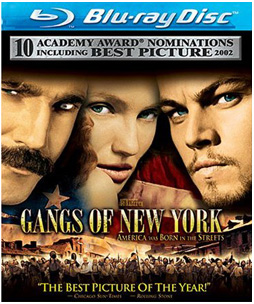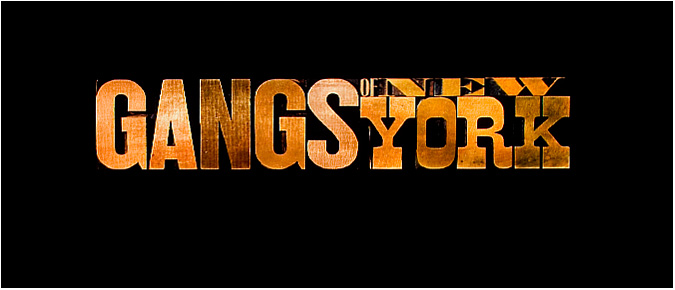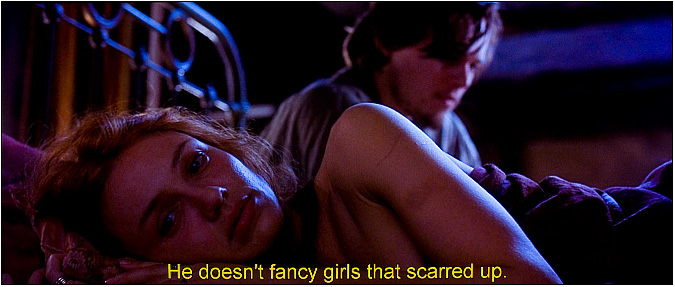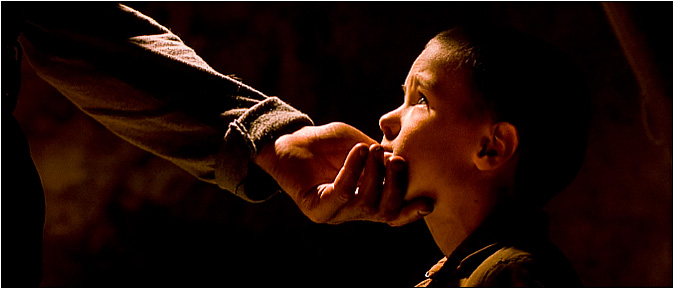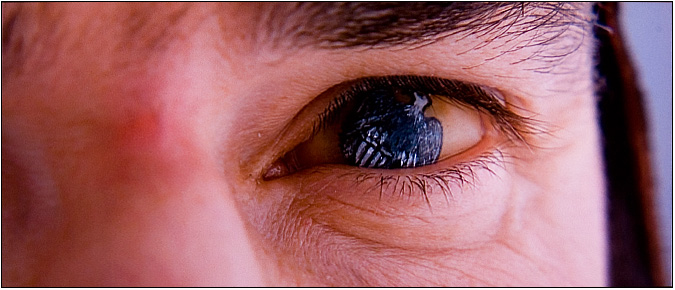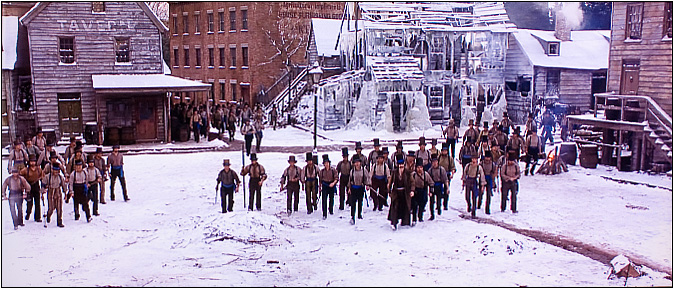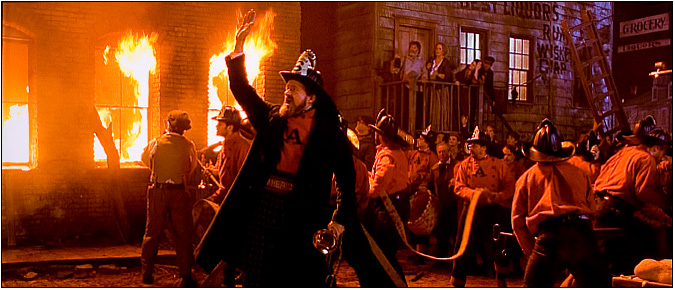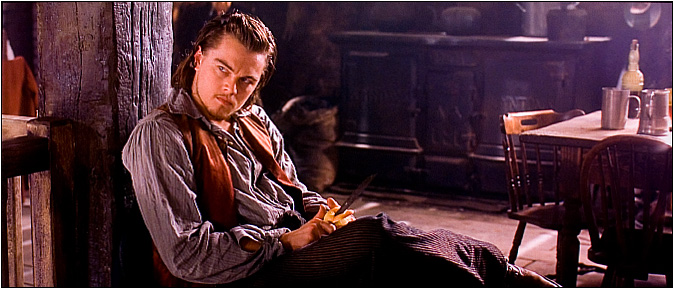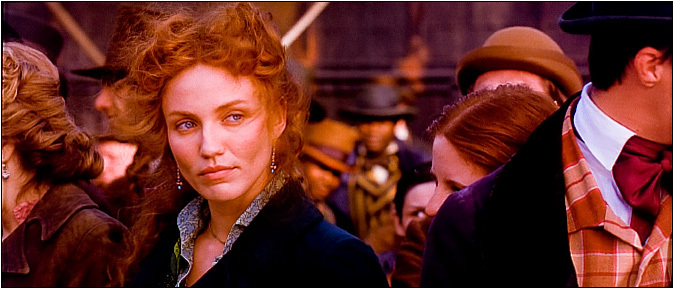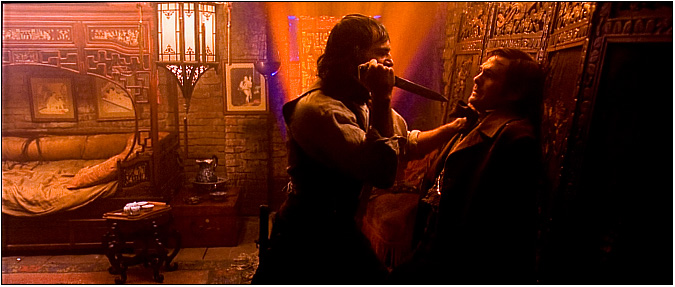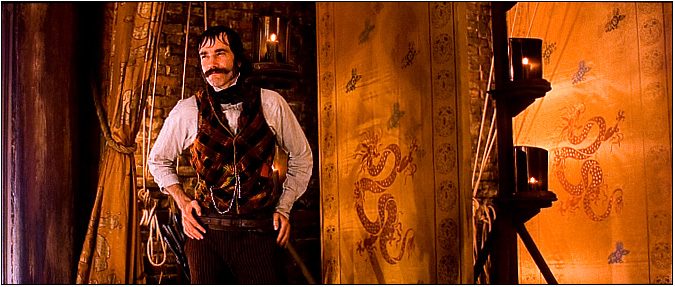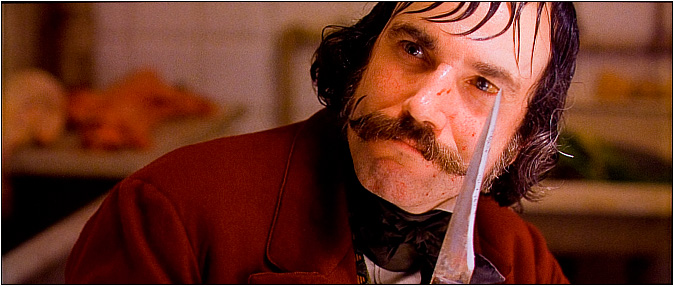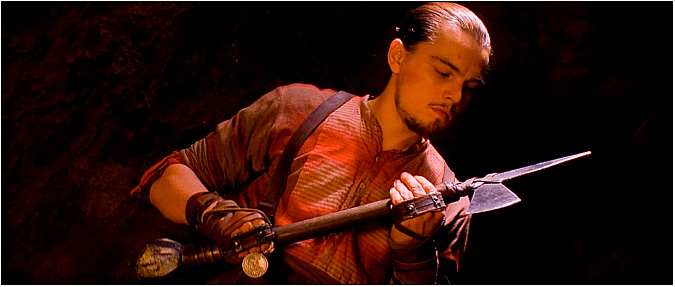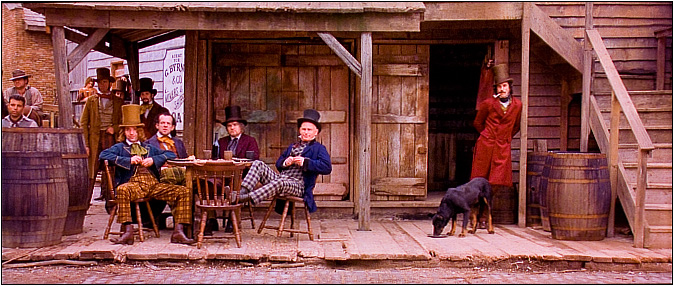Review by Leonard Norwitz
Studio:
Theatrical:
Blu-ray: Buena Vista Home Entertainment
Disc:
Region: A
Runtime: 167 min
Chapters: 24
Size: 50 GB
Case: Locking Blu-ray case
Release date: July 1, 2008
Video:
Aspect ratio: 2.35:1
Resolution: 1080p
Video codec: VC-1
Audio:
English 5.1 Uncompressed (48 kHz/24-bit); English &
French DD 5.1 Surround
Subtitles:
English SDH, French, Swedish, Norwegian, Danish,
Finnish, Icelandic
Extras:
• Audio Commentary with Director Martin Scorsese
• Featurettes:
• Costume Design (08:00)
• Set Design ( 09:12)
• Exploring the Sets of Gangs of New York (22:31)
• History of the Five Points (13.33)
• Discovery Channel Special:
• U2 Music Video: The Hands That Built America
(04:39)
• Theatrical & Teaser Trailers
The Film:
Long in gestation, high in hopes for Scorsese, who
hadn't had a big hit since Goodfellas in 1990
(though I was and remain a fan of Age of Innocence
despite the ill-considered entrance of Enya),
Gangs of New York was expected to be his
breakthrough film – a movie to satisfy audiences,
critics and the Academy. (Remember he had not yet
won his first Oscar, Raging Bull notwithstanding.)
Alas, it was not to be. After a promising, if not
dazzling, opening weekend, ticket sales maintained a
downward trend, and after four months it still had
not recouped its money.
The first time I saw the film in 2002, I was,
frankly, a little bewildered, but revisiting the
movie on Blu-ray last night, with expectations in
perspective, I feel more comfortable with what
Scorsese may have been up to, even if he didn't
entirely succeed. Gangs of New York is nothing if
not an exercise in style, as is what Scorsese is
generally about. The problem for me is that there is
so much of it: too much exposition, too much
narration, too many characters who recognize the
adult Vallon for who he is and too few who don't,
and too little of any character we get to care about
– except perhaps Bill the Butcher, and I doubt that
is as intended.
I don't mind that just about every actor has all his
or her stops open, for that's just another aspect of
the style of the film. The basic flaw, as I see it,
is that DiCaprio's character, Amsterdam Vallon, is
on a vengeance kick from ten minutes into the story
and, while it seems compelling at first blush, it
doesn't really hold up: His father is killed in a
"fair" fight – which is to say: he sort of asked for
it, as did every gang member on either side – so why
should we care about Vallon's retribution! I
understand that such is the nature of the eternal
feud that humans engage in since Genesis, but I
don't see that this is the moral of the screenplay.
Does it really matter that Bill "The Butcher"
Cutting (you gotta love the name!), played with
comical menace by Daniel Day-Lewis, is something of
a monster among monsters? Isn't everyone in this
story except Amsterdam, who takes his father's
advice to "never look away" very seriously, a
monster? Could anyone living in such a place be
else?
It cannot be doubted that America was born out of a
penchant for unneighborly violence, and this is
likely what Scorsese and screenwriter Jay Cocks are
trying to underscore; but I found that the idea gets
strangled in the morass of political and social plot
points and the contrapuntal romance between DiCaprio
and Diaz. Then there's that ending – both the
knifeout between Bill and Amsterdam, which is
anticlimactic, and the final 15 seconds. At least
this time I knew it was coming, and so was prepared.
But I still think it's out of place – artistically
and otherwise, especially when preceded by another
explanation by DiCaprio's voiceover. It should be
enough for us to make the connection. Why do
filmmakers think the audience is asleep – or is that
a rhetorical question?
When the SD DVD came out there was talk that Miramax
might release the rumored four-hour cut, but they
didn't, nor did they here. If it were less episodic
and do without the narration, which it probably
wouldn't call for, I wouldn't mind giving it a go.
The Movie : 7
The time is 1846, and while America was going
through the growing pains that would eventually
erupt in civil war, New York City's Five Points
district was having a civil war of its own: a kind
of dress rehearsal for things to come. The
neighborhood was ruled by gangs – it was what folks
lived for, and died of. Scorsese places us in medias
res as Bill the Butcher's self-proclaimed "Native
Americans" declare the neighborhood ain't fit for
the waves of mostly Irish immigrants who have been
pouring in of late. The latter have formed
themselves into a gang with the unfortunate name of
"Dead Rabbits," led by Priest Vallon (Liam Neeson).
Vallon's young son watches in horror as many are
slaughtered - most importantly, his father.
Cut to 16 years later, and "Amsterdam" Vallon (DiCaprio)
returns to the scene of the crime to take his
revenge – not as a thief in the night, he vows at
first, but in public for all to see. A killer has to
have his code – just as Bill the Butcher (Day-Lewis)
did when he killed the priest and outlawed the name
of "Dead Rabbits." Bill has since graduated to
bigger things: he is now in open collaboration with
Boss Tweed and the police; he has a passing
acquaintance with the swells in upper Manhattan, but
closer to home he is taken with Amsterdam's grit and
fighting skills. As we expect, Amsterdam gets close
enough to Bill to dispatch him at any moment of his
choosing, but, like Hamlet, he hesitates, in part
because, unlike Hamlet, he finds power attractive,
and also because he is confused by Bill's public and
privately held respect for Vallon's father,
something about which he never is able to
comprehend. Meanwhile, forces gather that threaten
to swallow Bill and Amsterdam and everyone else into
oblivion.
Image:
7/9
(I have a new scoring system for the Image in order
to make the first number rationalize with the other
scores): The first number indicates a relative level
of excellence compared to other Blu-ray DVDs on a
ten-point scale. The second number places this image
along the full range of DVDs, including SD 480i.
Returning to the question of style, the Blu-ray
image is perhaps too much of a good thing, for now
we can see clearly what we might not have noticed in
the theatre: the lighting, which is not supposed to
be so apparent as to bring our attention to it. The
smaller your screen them more this will become
apparent – such is the liability of high definition
in respect to some feature films.
There are scenes exquisitely and naturally rendered.
Others show a respectable and appropriate grain. I
downgraded the score because of an occasional narrow
vertical flare, sometimes light, sometimes darker,
on some frames, as if the print itself was damaged.
If so, I commend Buena Vista for not cropping the
film to accommodate it; on the other hand, these
could have been repaired in the digital domain.
Audio & Music:
7/8
Again the question of style: Why else, I ask, is Di
Caprio's voiceover narration sound cavernous,
especially in the opening minutes – all the more so
in its uncompressed 5.1 mix? It's just another
eyebrow raising decision. Aside from that nagging
niggle, all else is clear and dynamic as required.
Operations:
7
Despite Buena Vista's having a hand in the
distribution we can be thankful that the number of
previews are few (only 5). Menu operations are
straightforward, though it does take awhile to
return to the bonus list from any of the extra
features using the Top Menu. I recommend advancing
the chapter. The subtitle translations are curious
for what is there Scandinavian languages) and what
is not (Spanish, Chinese, Korean). Yellow subtitles
- an eyesore.
Extras:
6
The Extra Features for the Blu-ray edition are the
same as for the 2-disc Collector's Edition SD from
2003, all of which remain in passable 480i format.
If you haven't seen it, I highly recommend the
35-minute Discovery channel featurette for its look
at the fascinating historical background from which
the feature film takes much of its social and
political substance. Though, curiously, it makes the
movie seem all the more episodic, as it attempts to
embrace every fact and factoid of the period in its
narrative. Scorsese is always an entertaining
raconteur, especially about his favorite subject. In
Exploring the Sets of Gangs of New York, he and the
set designer walk about what is left of the set and
reminisce.
|
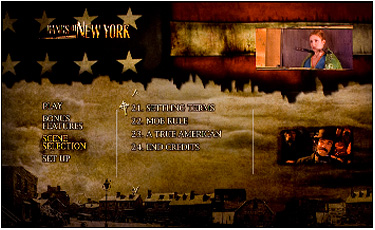 |
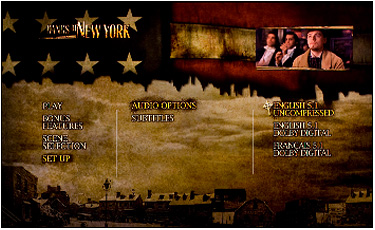 |
|
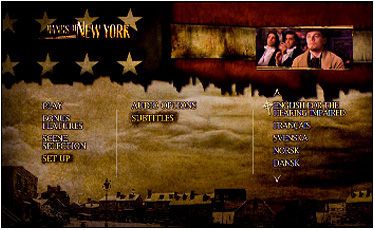 |
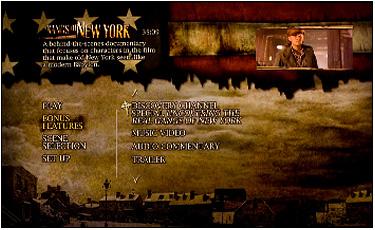 |
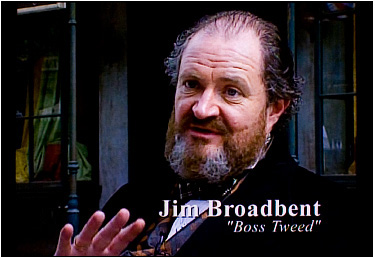 |
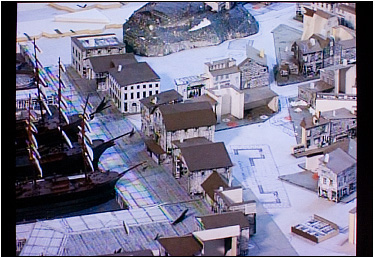 |
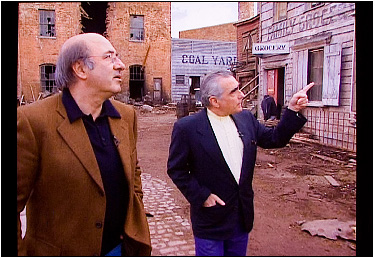 |
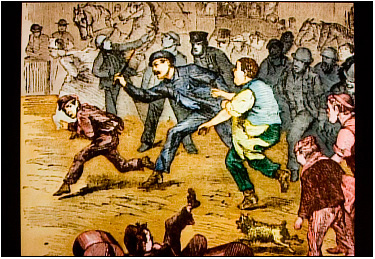 |
Bottom line:
7
While flawed, Martin Scorsese's look at America's
violent growing pains is worthy if only for that
reason. But more than that is Daniel Day-Lewis in
another memorable characterization and the
historical look of the film, which is always
gorgeous (despite my advisory about the lighting at
times).
Leonard Norwitz
June 22, 2008
